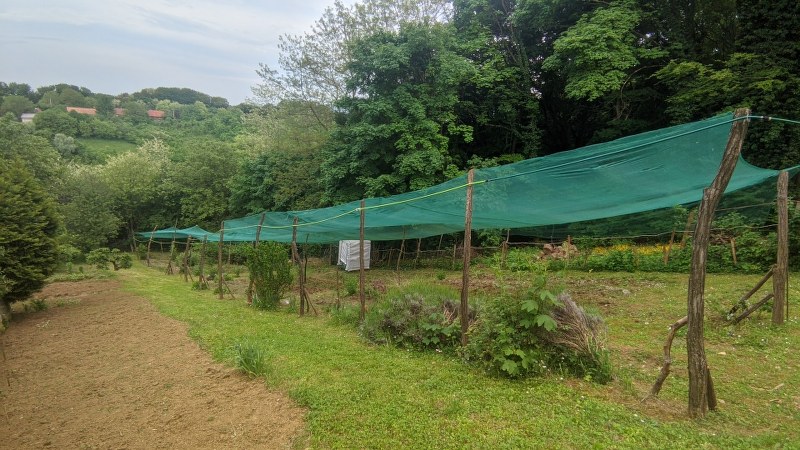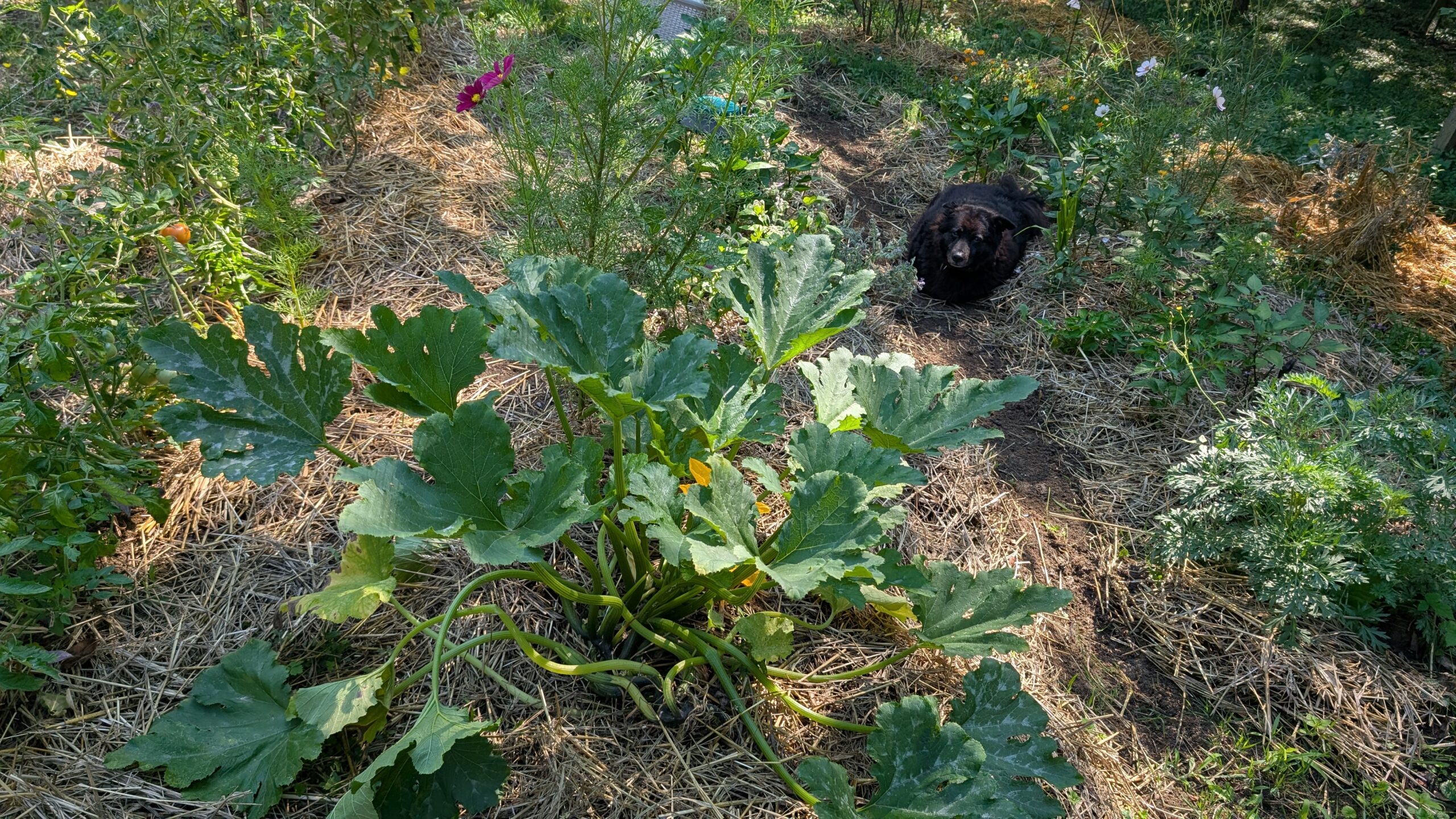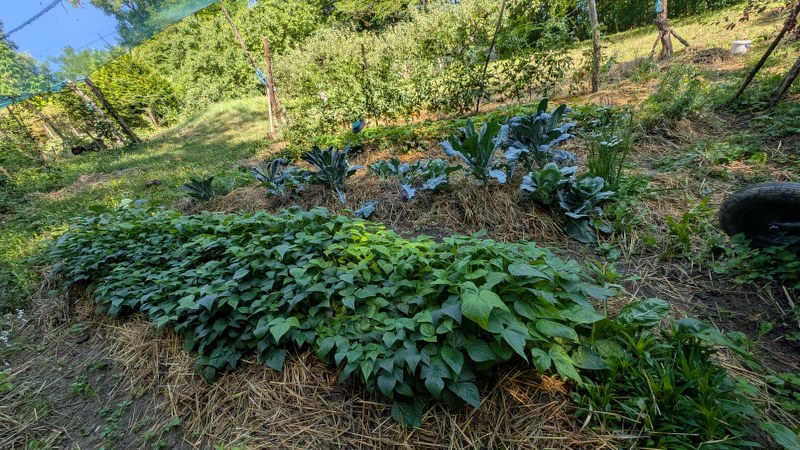After a very cold spring, with temperatures below the average, summer came hot and dry. What were supposed to be the two mildest months ended up being a real challenge for us.
May
May continued the spring’s average trend. The mornings have been around the frost temperatures the entire month, and with quite cold days. Luckily, this year we bought a quite big greenhouse so we were able to protect the seedlings from the constant temperature drops. The seedlings were planted during the last decade of May. But that still didn’t stop the cucumbers from freezing. The cold wind and daily temperatures below 10°C managed to kill off all the cucumber plants. I had to start new ones, directly sowing the cucumbers in the garden.

While most of the seedlings were struggling with the low temperatures, peas were thriving. The past couple of years, the pea harvest was almost non-existent, due to the very warm springs. This year, with all the rain and cold, the peas were doing excellently. I’ve sown a small amount, thinking that there is no point in sowing more, expecting a warm spring, but the chilly spring was perfect for them. The rest of the plants grew very slowly; some, like tomatoes, looked completely dormant. But in just a couple of weeks, everything changed.


June
June brought an abundance of sun. All of the plants grew like mushrooms after the rain. But the joy didn’t last long. After a couple of weeks, we were in a situation that required daily watering. Although May was quite rainy, the constant cold wind kept drying out the soil. As soon as the heat started, the soil dried up very quickly, and by the middle of June, we already had cracks around the garden. Usually, the cracks appear in the middle of July. Now, they were here in June, and not getting any smaller. While cracks around the grassy parts of the garden weren’t a big issue, the ones forming on paths are an actual problem. They are spreading and starting to get onto the beds. I ended up with plants that have roots completely exposed. This is why we decided that it was time to start watering even the paths.

Now, we usually water with watering cans, but since expanding the garden, there is just too much soil to cover, so we bought grass sprinklers to help with watering. Although it is not recommended to water the plants on the leaves during the heat waves, very early morning watering can actually be very beneficial. Watering the plants with sprinklers in the morning prevented the lettuce, chard, and brassicas from bolting, which would have otherwise occurred.

June brought only 10mm of rain throughout the month, which was not enough. Temperatures are constantly above 30°C (86°F), night temperatures rarely drop below 20°C (68°F), and the plants are starting to feel the stress. Peas, which looked amazing, soon started drying out while they were still flowering, so again I ended with a quite poor harvest. I needed only a week or two of mild summer weather, and the harvest would be perfect. This way I got only 2,5kg (5.5lbs) of peas out of 500 g (1.1lbs) of seeds. There were at least 2/3 of empty and dried pods left in the end.

I’m having issues with mulching, too. Most of the garden is completely bare for now. There is no grass in the garden to use; the grass isn’t growing. While last year with regular showers we had to mow every two weeks, this year it has been almost 2 months since the last mowing. My beds are covered only with leftover autumn leaves and April-mowed grass, which are almost completely disintegrated. I don’t even have enough mulch to cover the potato beds the second time. There has been so little grass around that I can’t even find people who sell hay bales. Finding straw in this area has been completely impossible, but usually, you could get hay. Now, even hay is unavailable. People are stocking for their own needs; there are no extras available.

There is also an issue with a certain rabbit that is coming to the garden and eating my vegetables. Brassicas are his favorite. For now, he’s been polite and has eaten only a couple of kale plants and kohlrabi leaves. We keep on chasing him out, but he keeps coming back. The fence is old, and due to the extremely dry soil, there are cracks under the fence where he enters the garden. We keep on closing them when we see him enter, but he keeps on finding new ones. Hopefully, he won’t find any new ones soon. The only brassicas he hasn’t tasted yet are my cabbages, and this is the first year in almost a decade that I have decent cabbage heads.


But, although everything sounds bad, things aren’t actually that terrible. Yes, the pea harvest was a mess, the carrots and beets are struggling with very hard and dense soil, and potatoes aren’t getting enough water, but the garden still looks quite decent, especially compared with the rest of the gardens in the village. Cucumbers, which I’ve sown in May, are flowering and starting to produce first fruits, tomatoes are looking good and perfectly healthy, even peppers, which are struggling a bit, are growing their first little peppers. Zucchinis are growing first fruits, and beans, despite the heat, are flowering for now. I keep on watering them every two days to keep all of them alive. And so far, it is working.

Plans for July
As it seems right now, there is no change in the weather soon. The heat will continue, and we’ll have to adapt to it. I need to find some hay somewhere. I was planning to skip the hand tilling this year and would ned some hay for this, but now I’m not sure if this will even be possible. The plan was also to start sowing vegetables for late autumn and winter harvests, but those also are now questionable. There is no point in starting seedlings while temperatures are constantly well above 30°C. So, for now, we plan to keep on watering and waiting for the heat to slow down a bit and to at least drop below the heatwave range.





Leave a Reply